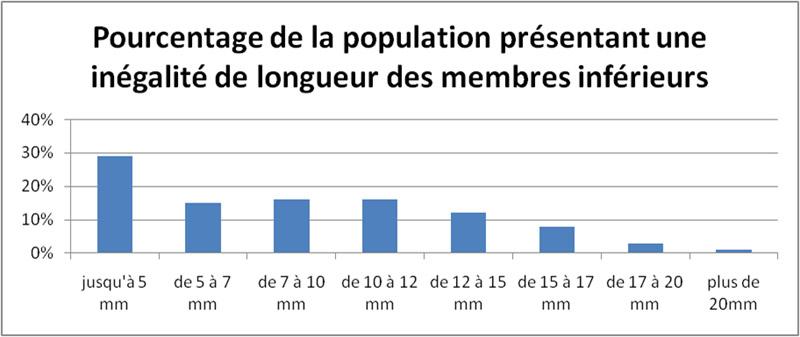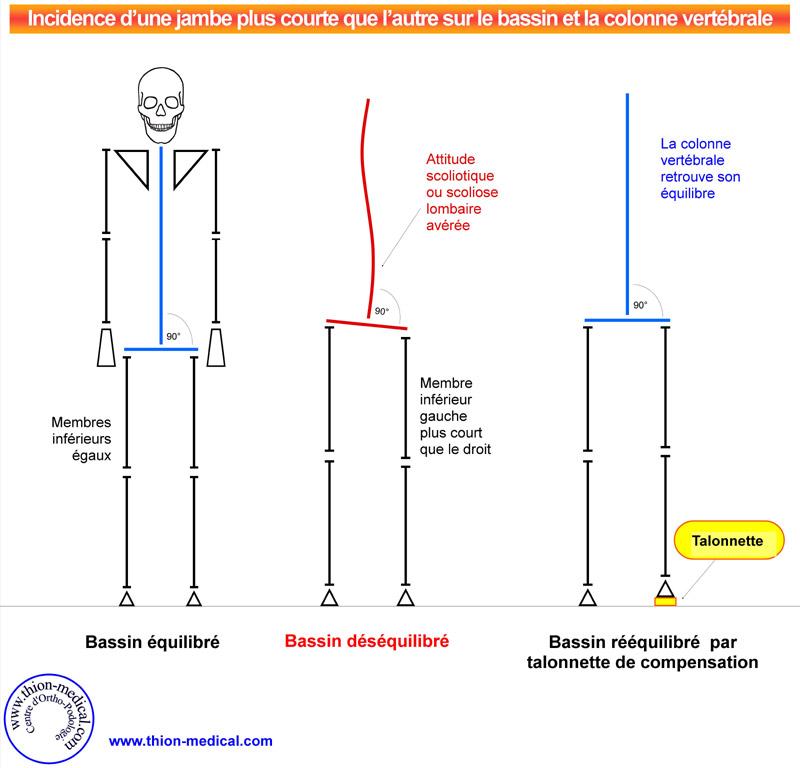
Appelez-nous au : 02 47 65 00 74
Inégalité de longueur de membre inférieur
L’Inégalité de Longueur des Membres Inférieurs (ILMI) se valide à la radiographie. Elle correspond à la différence de hauteur entre les 2 jambes, mesurée au niveau du sommet des têtes fémorales.

( Radiographie du bassin de face, patient debout )
La première conséquence de cette ILMI est l’inclinaison du bassin dans le plan frontal.
Cette bascule de bassin entraîne la colonne vertébrale dans une attitude scoliotique ou vraie scoliose lombaire, créant ainsi un déséquilibre des tensions musculaires, ligamentaires, et articulaires.
C’est ainsi que peuvent s’installer des troubles musculosqulettiques avec leur cortège de douleurs.
Il est important dorénavant de porter une talonnette de compensation en matériau peu compressible avec une hauteur adaptée pour corriger cette ILMI et rétablir l’harmonie fonctionnelle .
Les études publiées sur l’Inégalité de Longueur des Membres Inférieurs (ILMI) révèlent que 8 personnes sur 10 ont une jambe plus courte que l’autre.
( Sur un panel de population exempte de fractures, d’opérations ou de maladies ayant une influence sur la croissance osseuse des membres inférieurs ).

La synthèse de ces travaux met en lumière plusieurs points :
-
Tout d’abord, il existe une grande disparité dans les écarts mesurés. (de 3 mm à 34 mm de différence de longueur entre les 2 jambes)
-
38% ont un déficit égal ou supérieur à 10 mm.
-
Presque un tiers de ces personnes ignoraient leur ILMI.
-
A peine 14% corrigent leur bascule de bassin par le port d’une talonnette de compensation ou d'une semelle orthopédique de compensation pour bascule du bassin sur mesure.
-
Enfin, malgré autant d’ILMI chez les hommes que chez les femmes, ces dernières sont 5 fois moins nombreuses à corriger leur bascule de bassin par une talonnette ou une semelle ( la raison avancée est la préoccupation esthétique ).
A noter, en marge de ces études, qu’après une intervention chirurgicale de la hanche suite à la pose d’une prothèse de la tête fémorale, une grave fracture des membres inférieurs ou une arthrose importante du genou ou de la hanche, il est intéressant de contrôler le bon équilibre du bassin par tout moyen ad hoc préconisé par votre médecin. Cela permettra de vérifier la pertinence d’une correction et de fait, de prévenir d’éventuels épisodes douloureux.



Talonnettes de compensation pour chaussures de Ville

Talonnettes de compensation pour chaussures de Sport


